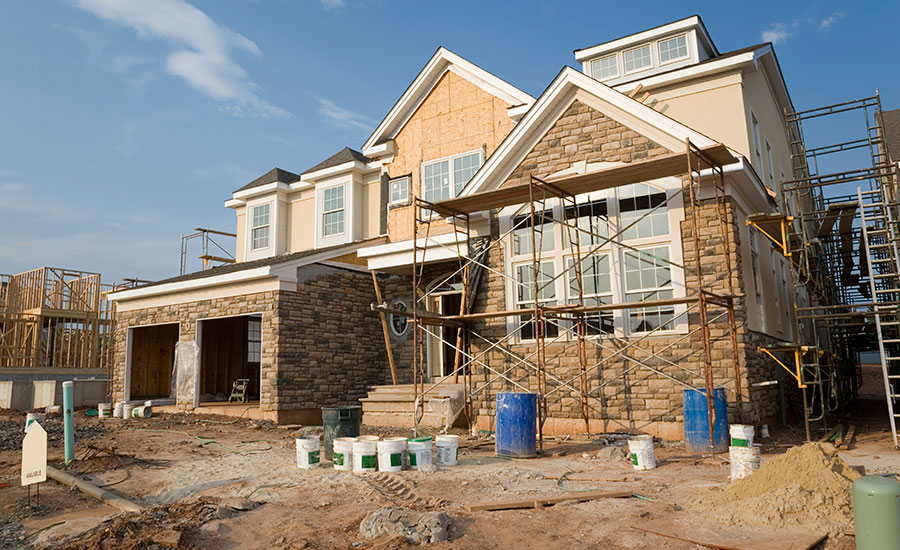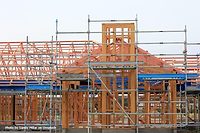Housing Affordability Declines Due to Economic Losses Stemming from COVID-19 Pandemic
In all, 61.3% of new and existing homes sold between the beginning of January and end of March, 2020, were affordable to families earning an adjusted U.S. median income of $72,900.

Surging job losses in March stemming from the COVID-19 pandemic contributed to a decline in U.S. median income and housing affordability in the first quarter of 2020, according to the most recent National Association of Home Builders (NAHB)/Wells Fargo Housing Opportunity Index (HOI). In all, 61.3% of new and existing homes sold between the beginning of January and end of March were affordable to families earning an adjusted U.S. median income of $72,900. This is down from the 63.2% of homes sold in the fourth quarter of 2019 that were affordable to households earning the median income of $75,500.
The Department of Housing and Urban Development’s original estimates of median family income for 2020 were developed prior to the COVID-19 pandemic. To account for the pandemic’s effects, the HUD estimates were reduced consistent with NAHB’s economic forecast for 2020. As a result, the 2020 national median income estimates used in the HOI calculations ($72,900) are 7.1% lower than the initial national 2020 estimates ($78,500) from HUD.
“The pandemic has clearly hurt housing affordability by exacerbating existing supply chain problems and slowing home construction during a time of underbuilding,” said Dean Mon, NAHB chairman and a home builder and developer from Shrewsbury, N.J.
The HOI shows that the national median home price held steady, edging up from $279,000 in the fourth quarter of 2019 to $280,000 in the first quarter. The median home price was $280,000 in both the second and third quarters of 2019. Meanwhile, average mortgage rates fell by 17 basis points in the first quarter to 3.61% from 3.78% in the fourth quarter.
“The affordability decline is tied to the coronavirus outbreak as job losses surged and median income fell due to reduced economic activity,” said Robert Dietz, NAHB’s chief economist. “However, housing demand started the year strong, interest rates are expected to stay at low levels for the foreseeable future and home prices have held remarkably stable over the past four quarters. As virus mitigation efforts show signs of success, workers will return to their jobs, and housing will help lead the economy to higher ground.”
Scranton-Wilkes Barre-Hazleton, Pa., was rated the nation’s most affordable major housing market, defined as a metro with a population of at least 500,000. There, 91% of all new and existing homes sold in the first quarter were affordable to families earning the area’s median income of $66,600. Meanwhile, Cumberland-Md.-W.Va., was rated the nation’s most affordable smaller market, with 97.1% of homes sold in the first quarter being affordable to families earning the median income of $57,500.
Rounding out the top five affordable major housing markets in respective order were Indianapolis-Carmel-Anderson, Ind.; Harrisburg-Carlisle, Pa.; Toledo, Ohio; and Albany, Schenectady-Troy, N.Y. Smaller markets joining Cumberland at the top of the list included Monroe, Mich.; Binghamton, N.Y.; Mansfield, Ohio; and Battle Creek, Mich.
San Francisco-Redwood City-South San Francisco, Calif., once again assumed the mantel as the nation’s least affordable major housing market. There, just 8.9% of the homes sold during the first quarter were affordable to families earning the area’s median income of $129,200. Los-Angeles-Long-Beach-Glendale, Calif., which fell to the number-two position, was the nation’s least affordable market in the fourth quarter.
Other major metros at the bottom of the affordability chart were in California. In descending order, they included Anaheim-Santa Ana-Irvine; San Diego-Carlsbad; and Oxnard-Thousand Oaks-Ventura.
All five least affordable small housing markets were also in the Golden State. At the very bottom of the affordability chart was Salinas, where 15.3% of all new and existing homes sold were affordable to families earning the area’s median income of $75,800. In descending order, other small markets at the lowest end of the affordability scale included San Luis Obispo-Paso Robles-Arroyo Grande; Merced; Santa Cruz-Watsonville; and Napa.
For additional information, visit www.nahb.org/hoi.
Looking for a reprint of this article?
From high-res PDFs to custom plaques, order your copy today!





